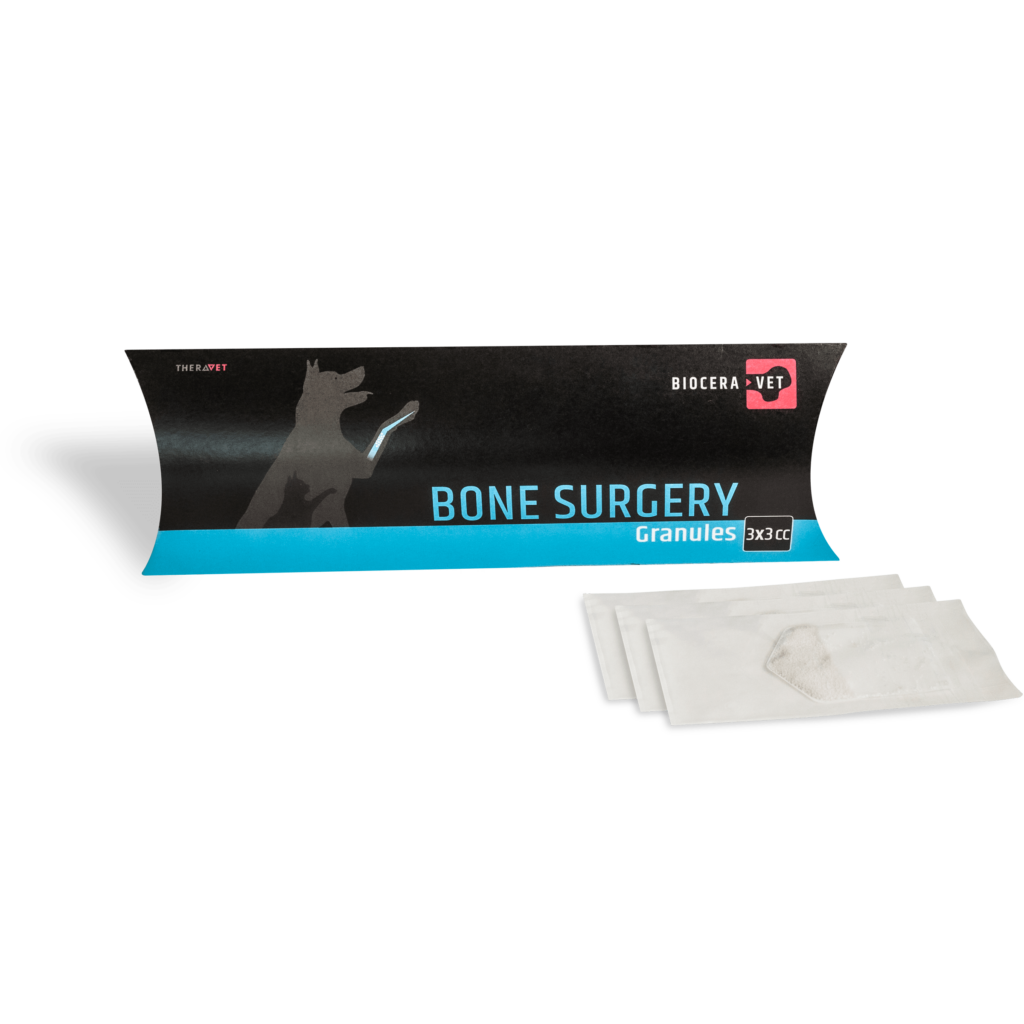
The affordable biocompatible calcium-phosphate bone substitute

The affordable biocompatible calcium-phosphate bone substitute



BIOCERA-VET® GRANULES is a synthetic bone substitute made of calcium-deficient apatite (CDA) crystals chemically close to the mineral composition of the natural bone.
BIOCERA-VET GRANULES:
- Biocompatible & resorbable bone graft
- Optimal osteoconduction properties thanks to its composition close to natural bone
- Affordable: the price-conscious solution for orthopedic bone void filling or as auto- and allograft extender.
GET OUR BIOCERA-VET GRANULES PRODUCTS
DO YOU WANT TO KNOW MORE?
Watch the testimonial of Dr RAGETLY about the use of BIOCERA-VET in bone surgery.
Dr RAGETLY, DVM, PhD, Dipl. ACVS, Dipl. ECVS, Surgery specialist – CHV Frégis, France
BIOCERA-VET : PROVEN EFFICACY AND SAFETY2
IN ARTHRODESIS, BIOCERA-VET SHOWS A COMPARABLE BONE FUSION3 AND LESS COMPLICATIONS

- > 100 clinical cases in Belgium, France and The Netherlands
- A comparative analysis between arthrodesis with BIOCERA-VET and autografts showed:
- A comparable bone fusion3 in arthrodesis
- Less complications
(2) “Efficacy and safety assessment of a self-setting bone substitute (α-TCP) as efficient alternative to autograft. Ragetly et al. 2022.” Best Poster Presentation at the VOS (Veterinary Orthopedic Society)
(3) Bone Fusion was assessed by a blinded independent radiological analysis by a qualified orthopedic surgeon using a numerical rating scale rating from 0-3 as described by Michael et al., 2003 and Ree et al. 2016
DO YOU PRACTICE ORTHOPEDIC SURGERIES?
Get in touch with us for more information about BIOCERA-VET’s advantages and indications
"*" indicates required fields
WHY BIOCERA-VET BONE SURGERY?

Easy and intuitive preparation, high injectability

Reduced surgery time

Fast-setting and mechanical strength

Excellent osteointegration

Accelerated bone consolidation

Reduced co-morbidities and complications (compared to autografts)
HOW TO USE

“BIOCERA-VET induces bone fusion thanks to its interesting properties of osteoconduction and osteointegration. It has real advantages for the veterinary surgeon allowing him to have an alternative to autograft, with less complications while saving significant surgical time.”
Dr Guillaume RAGETLY, DVM, PhD, Dipl. ACVS, Dipl. ECVS
Head of Department of Surgery at CHV Frégis (France)



